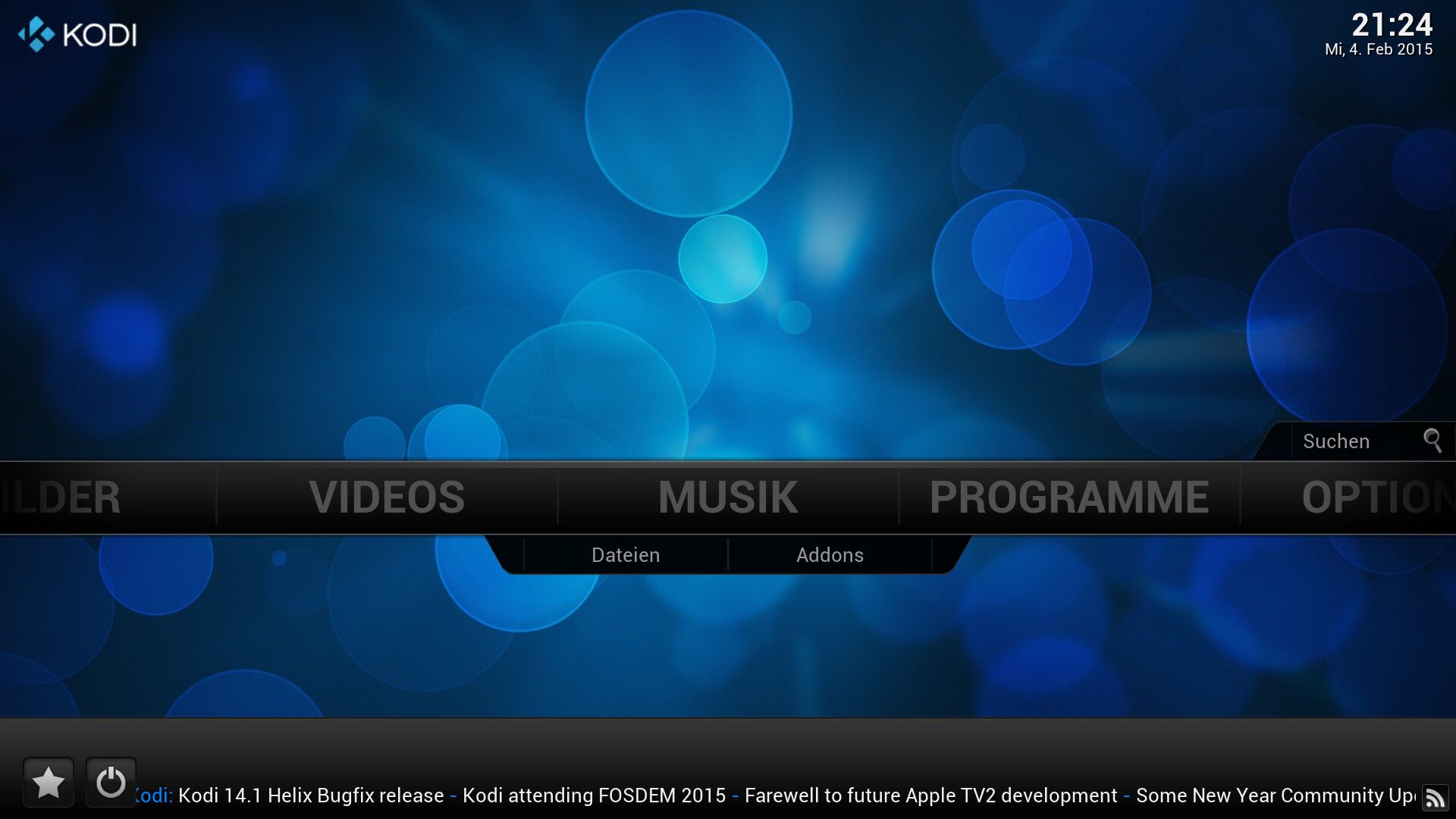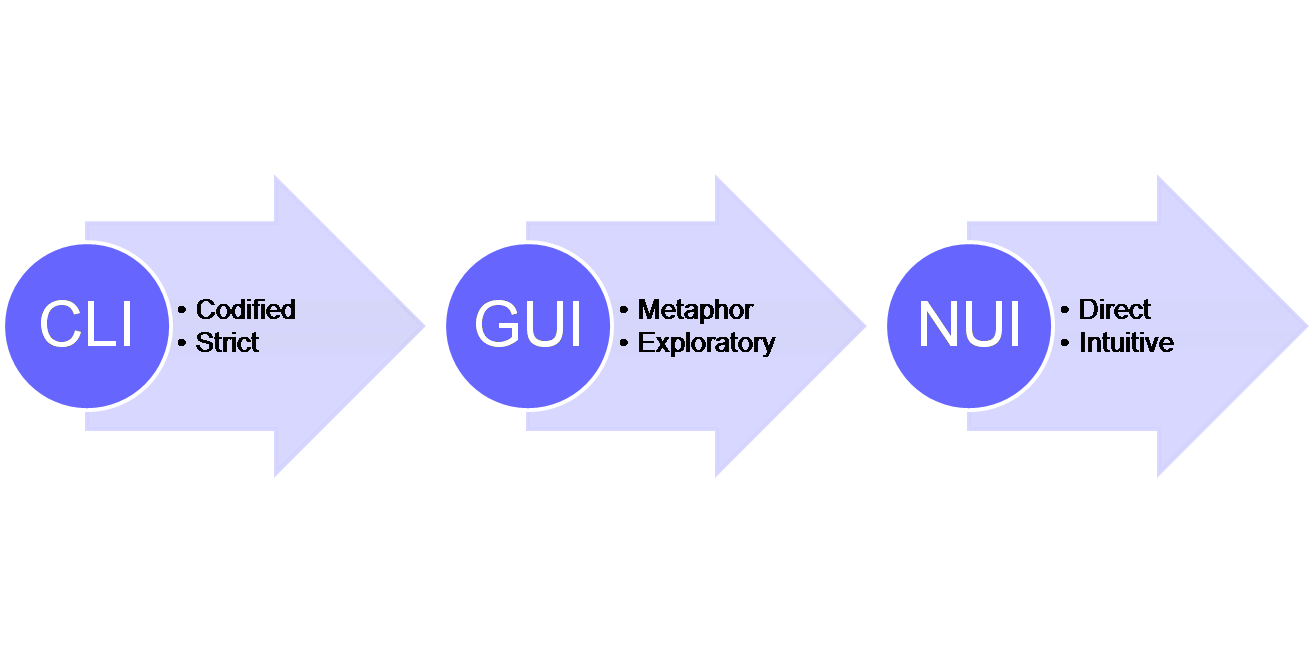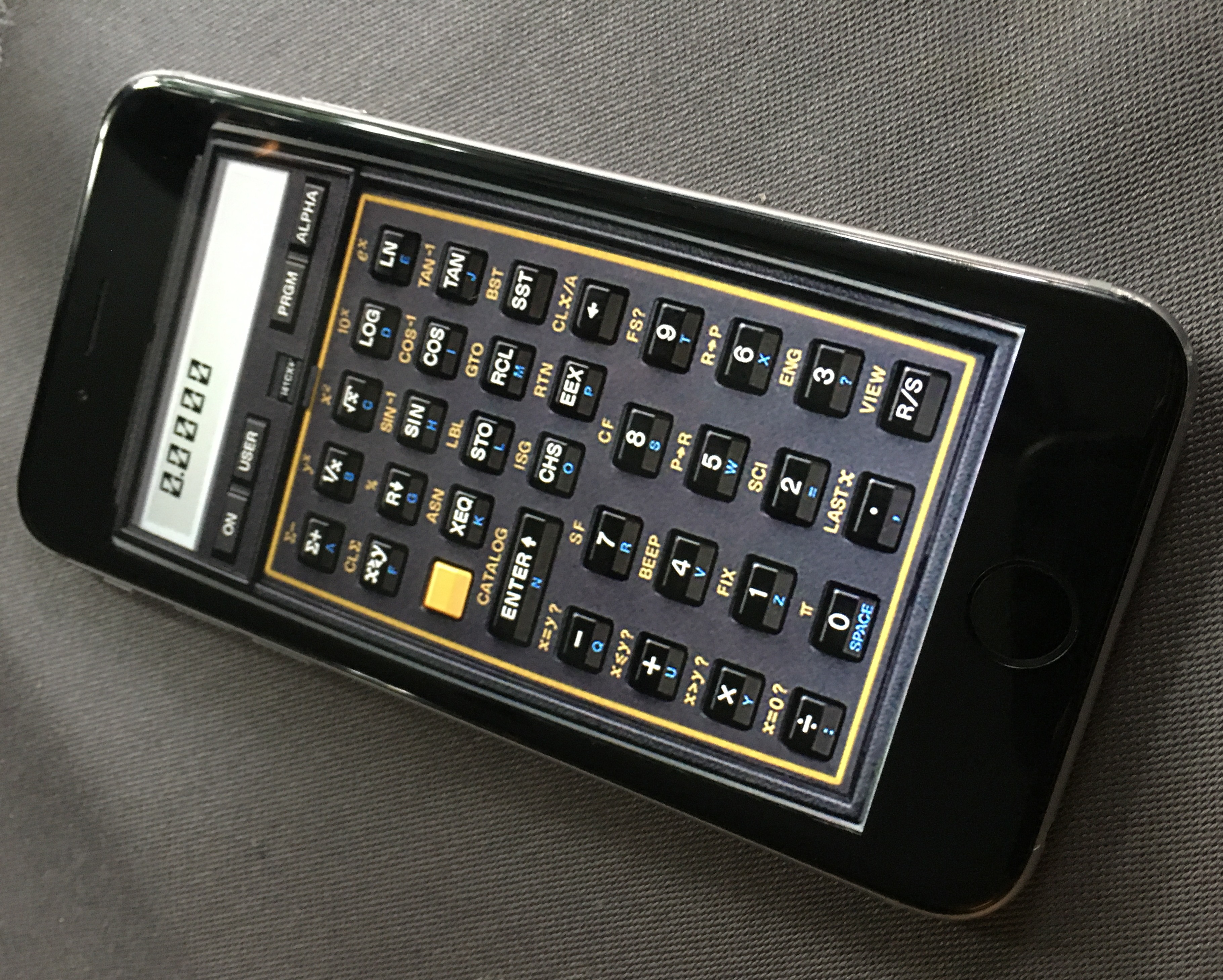|
Post-WIMP
In computing, post-WIMP ("windows, icons, menus, pointer") comprises work on user interfaces, mostly graphical user interfaces, which attempt to go beyond the paradigm of windows, icons, menus and a pointing device, i.e. WIMP interfaces. The reason WIMP interfaces have become so prevalent since their conception at Xerox PARC is that they are very good at abstracting work-spaces, documents, and their actions. Their analogous desktop metaphor to documents as paper sheets or folders makes WIMP interfaces easy to introduce to new users. Furthermore their basic representations as rectangular regions on a 2D flat screen make them a good fit for system programmers, thus favoring the abundance of commercial widget toolkits in this style. However, WIMP interfaces are not optimal for working with certain tasks or through input devices which differ from a mouse and keyboard. WIMPs are usually pixel-hungry, so given limited screen real estate they can distract attention from the task at hand. ... [...More Info...] [...Related Items...] OR: [Wikipedia] [Google] [Baidu] |
Graphical User Interfaces
A graphical user interface, or GUI, is a form of user interface that allows user (computing), users to human–computer interaction, interact with electronic devices through Graphics, graphical icon (computing), icons and visual indicators such as secondary notation. In many applications, GUIs are used instead of text-based user interface, text-based UIs, which are based on typed command labels or text navigation. GUIs were introduced in reaction to the perceived steep learning curve of command-line interfaces (CLIs), which require commands to be typed on a computer keyboard. The actions in a GUI are usually performed through direct manipulation interface, direct manipulation of the graphical elements. Beyond computers, GUIs are used in many handheld mobile devices such as MP3 players, portable media players, gaming devices, smartphones and smaller household, office and Distributed control system, industrial controls. The term ''GUI'' tends not to be applied to other lower-displa ... [...More Info...] [...Related Items...] OR: [Wikipedia] [Google] [Baidu] |
10-foot User Interface
In computing, 10-foot user interface, 10-foot UI or 3-meter user interface is a graphical user interface designed for televisions. Compared to desktop computer and smartphone user interfaces, it uses text and other interface elements that are much larger in order to accommodate a typical television viewing distance of . In reality, this distance varies greatly between households. Additionally, the limitations of a television's remote control necessitate extra user experience considerations to minimize user effort. In the past, these types of human interaction design (HID) interfaces were driven by remote controllers primarily using infrared (IR) codes signals, which are increasingly replaced by other two-way radio-frequency protocol standards such as Bluetooth while maintaining the use of IR for certain wake-up situations. The voice interfaces are also now purposed to provide a near-field experience in addition to the far-field experience of the likes of smart speakers. One of ... [...More Info...] [...Related Items...] OR: [Wikipedia] [Google] [Baidu] |
Voice User Interface
A voice-user interface (VUI) enables spoken human interaction with computers, using speech recognition to understand spoken commands and answer questions, and typically text to speech to play a reply. A voice command device is a device controlled with a voice user interface. Voice user interfaces have been added to automobiles, home automation systems, computer operating systems, home appliances like washing machines and microwave ovens, and television remote controls. They are the primary way of interacting with virtual assistants on smartphones and smart speakers. Older automated attendants (which route phone calls to the correct extension) and interactive voice response systems (which conduct more complicated transactions over the phone) can respond to the pressing of keypad buttons via DTMF tones, but those with a full voice user interface allow callers to speak requests and responses without having to press any buttons. Newer voice command devices are speaker-independent ... [...More Info...] [...Related Items...] OR: [Wikipedia] [Google] [Baidu] |
Natural User Interface
In computing, a natural user interface (NUI) or natural interface is a user interface that is effectively invisible, and remains invisible as the user continuously learns increasingly complex interactions. The word "natural" is used because most computer interfaces use artificial control devices whose operation has to be learned. Examples include Virtual assistant, voice assistants, such as Alexa and Siri, touch and multitouch interactions on today's mobile phones and tablets, but also touch interfaces invisibly integrated into the textiles of furniture. An NUI relies on a user being able to quickly transition from novice to expert. While the interface requires learning, that learning is eased through design which gives the user the feeling that they are instantly and continuously successful. Thus, "natural" refers to a goal in the user experience – that the interaction comes naturally, while interacting with the technology, rather than that the interface itself is natural. This ... [...More Info...] [...Related Items...] OR: [Wikipedia] [Google] [Baidu] |
Web Application
A web application (or web app) is application software that is created with web technologies and runs via a web browser. Web applications emerged during the late 1990s and allowed for the server to dynamically build a response to the request, in contrast to static web pages. Web applications are commonly distributed via a web server. There are several different tier systems that web applications use to communicate between the web browsers, the client interface, and server data. Each system has its own uses as they function in different ways. However, there are many security risks that developers must be aware of during development; proper measures to protect user data are vital. Web applications are often constructed with the use of a web application framework. Single-page applications (SPAs) and progressive web apps (PWAs) are two architectural approaches to creating web applications that provide a user experience similar to native apps, including features such as smoo ... [...More Info...] [...Related Items...] OR: [Wikipedia] [Google] [Baidu] |
Tangible User Interface
A tangible user interface (TUI) is a user interface in which a person interacts with digital information through the physical environment. The initial name was Graspable User Interface, which is no longer used. The purpose of TUI development is to empower collaboration, learning, and design by giving physical forms to digital information, thus taking advantage of the human ability to grasp and manipulate physical objects and materials. This was first conceived by Radia Perlman as a new programming language that would teach much younger children similar to Logo, but using special "keyboards" and input devices. Another pioneer in tangible user interfaces is Hiroshi Ishii, a professor at the MIT who heads the Tangible Media Group at the MIT Media Lab. His particular vision for tangible UIs, called ''Tangible Bits'', is to give physical form to digital information, making bits directly manipulable and perceptible. Tangible bits pursues the seamless coupling between physical obje ... [...More Info...] [...Related Items...] OR: [Wikipedia] [Google] [Baidu] |
Zooming User Interface
In computing, a zooming user interface or zoomable user interface (ZUI, pronounced zoo-ee) is a type of graphical user interface (GUI) where users can change the scale of the viewed area in order to see more detail or less, and browse through different documents. Information elements appear directly on an infinite virtual desktop (usually created using vector graphics), instead of in windows. Users can pan across the virtual surface in two dimensions and zoom into objects of interest. For example, as you zoom into a text object it may be represented as a small dot, then a thumbnail of a page of text, then a full-sized page and finally a magnified view of the page. ZUIs use zooming as the main metaphor for browsing through hyperlinked or multivariate information. Objects present inside a zoomed page can in turn be zoomed themselves to reveal further detail, allowing for recursive nesting and an arbitrary level of zoom. When the level of detail present in the resized obje ... [...More Info...] [...Related Items...] OR: [Wikipedia] [Google] [Baidu] |
Mobile App
A mobile application or app is a computer program or software application designed to run on a mobile device such as a smartphone, phone, tablet computer, tablet, or smartwatch, watch. Mobile applications often stand in contrast to desktop applications which are designed to run on desktop computers, and web applications which run in mobile web browsers rather than directly on the mobile device. Apps were originally intended for productivity assistance such as email, calendar, and contact databases, but the public demand for apps caused rapid expansion into other areas such as mobile games, factory automation, GPS and location-based services, order-tracking, and ticket purchases, so that there are now millions of apps available. Many apps require Internet access. Apps are generally downloaded from app stores, which are a type of digital distribution platforms. The term "app", short for "Application software, application", has since become very popular; in 2010, it was listed as " ... [...More Info...] [...Related Items...] OR: [Wikipedia] [Google] [Baidu] |
Smartphone
A smartphone is a mobile phone with advanced computing capabilities. It typically has a touchscreen interface, allowing users to access a wide range of applications and services, such as web browsing, email, and social media, as well as multimedia playback and Streaming media, streaming. Smartphones have built-in cameras, GPS navigation, and support for various communication methods, including voice calls, text messaging, and internet-based messaging apps. Smartphones are distinguished from older-design feature phones by their more advanced hardware capabilities and extensive mobile operating systems, access to the internet, business applications, Mobile payment, mobile payments, and multimedia functionality, including music, video, mobile gaming, gaming, Internet radio, radio, and Mobile television, television. Smartphones typically feature MOSFET, metal–oxide–semiconductor (MOS) integrated circuit (IC) chips, various sensors, and support for multiple wireless communicati ... [...More Info...] [...Related Items...] OR: [Wikipedia] [Google] [Baidu] |
Alpha Compositing
In computer graphics, alpha compositing or alpha blending is the process of combining one image with a background to create the appearance of partial or full transparency. It is often useful to render picture elements (pixels) in separate passes or layers and then combine the resulting 2D images into a single, final image called the composite. Compositing is used extensively in film when combining computer-rendered image elements with live footage. Alpha blending is also used in 2D computer graphics to put rasterized foreground elements over a background. In order to combine the picture elements of the images correctly, it is necessary to keep an associated '' matte'' for each element in addition to its color. This matte layer contains the coverage information—the shape of the geometry being drawn—making it possible to distinguish between parts of the image where something was drawn and parts that are empty. Although the most basic operation of combining two images is ... [...More Info...] [...Related Items...] OR: [Wikipedia] [Google] [Baidu] |
Don Gentner
Don, don or DON and variants may refer to: Places *Don (river), a river in European Russia *Don River (other), several other rivers with the name * Don, Benin, a town in Benin * Don, Dang, a village and hill station in Dang district, Gujarat, India * Don, Nord, a ''commune'' of the Nord ''département'' in northern France *Don, Tasmania, a small village on the Don River, located just outside Devonport, Tasmania *Don, Trentino, a commune in Trentino, Italy *Don, West Virginia, a community in the United States * Don Republic, a temporary state in 1918–1920 *Don Jail, a jail in Toronto, Canada *DON, Chapman code for County Donegal, Ireland People and characters Role or title *Don (honorific), a Spanish, Portuguese, and Italian title, given as a mark of respect * Don (academia), a fellow or tutor of a college or university in the U.K. and elsewhere *Don, a crime boss, especially in the Mafia People with the name * Don (given name), a short form of the masculine given name ... [...More Info...] [...Related Items...] OR: [Wikipedia] [Google] [Baidu] |
Jakob Nielsen (usability Consultant)
Jakob Nielsen (born 5 October 1957) is a Danish web usability consultant, human–computer interaction researcher, and co-founder of Nielsen Norman Group. He was named the “guru of Web page usability” in 1998 by The New York Times and the “king of usability” by Internet Magazine. Education and early life Jakob Nielsen was born 5 October 1957 in Copenhagen, Denmark. He holds a PhD in 1988 in human–computer interaction from the Technical University of Denmark from DAIMI. Career and research Nielsen's affiliations include Bellcore, teaching at the Technical University of Denmark, and the IBM User Interface Institute at the Thomas J. Watson Research Center. From 1994 to 1998, he was a distinguished engineer Sun Microsystems. Nielsen Norman Group (NNG) After his regular articles on his website about usability research attracted media attention, he co-founded usability consulting company Nielsen Norman Group (NN/g) of Fremont, California in 1998 with fellow usability e ... [...More Info...] [...Related Items...] OR: [Wikipedia] [Google] [Baidu] |







